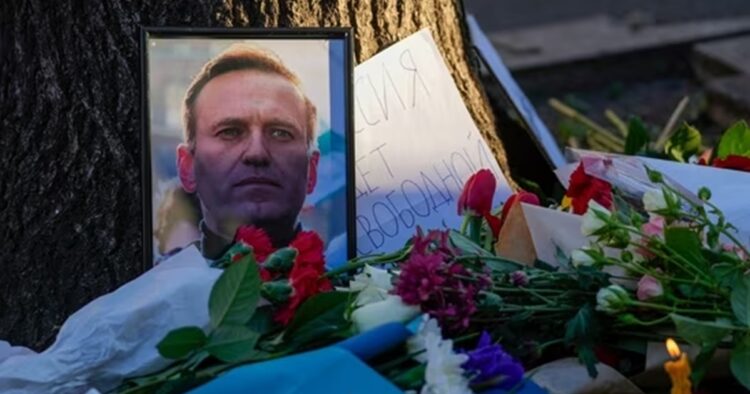Moscow issued a warning against street protests on Friday in response to the death of prominent Kremlin critic Alexei Navalny. Navalny reportedly passed away while serving a 19-year sentence in an Arctic prison colony, sparking outrage and expressions of mourning across social media platforms.
Protest Warnings: The prosecutor’s office in Moscow addressed online calls for a mass rally in the city center, cautioning against any actions that could violate the law. It’s important to note that protests are illegal in Russia under strict anti-dissent laws, with authorities historically cracking down harshly on rallies in support of Navalny.
Tributes and Memorials: Despite the warnings, individuals across Moscow paid their respects to Navalny by laying flowers at various memorials dedicated to victims of political repression. Images circulated on social media showed people gathering at the Solovetsky Stone, a monument honoring victims of Soviet-era repression, and at a bridge near the Kremlin where Putin critic Boris Nemtsov was assassinated in 2015.
Police Action: Reports emerged of police dispersing gatherings, including one at a memorial in the central city of Kazan, where individuals had assembled in the snow to pay their respects. Additionally, at least one person was detained in Moscow for holding up a placard that appeared to condemn the authorities.
International Demonstrations: Beyond Russia’s borders, larger demonstrations occurred in cities like Tbilisi, Yerevan, and Belgrade, home to significant populations of Russians who fled the country following Moscow’s military actions in Ukraine. These gatherings reflected solidarity with Navalny and condemnation of the Russian government’s handling of dissent.
The death of Alexei Navalny has reignited debates about political freedoms and human rights in Russia. Despite warnings from authorities, individuals both within Russia and abroad continue to express their grief and dissatisfaction through various means, underscoring the ongoing tensions between the government and its critics.

















Comments